Model Course
「平城宮跡」をめぐる 3時間コース
和銅3年(710年)に藤原京より遷都された平城京の中心であった「平城宮(へいじょうきゅう)」の宮跡で、1998年(平成10年)には「古都奈良の文化財」の構成資産の1つとして、世界遺産に登録されました。長期間にわたって調査や復原整備が進められており、東西1.3km、南北1kmの広大な敷地に第一次大極殿、朱雀門などが復原されています。2018年(平成30年)には5つの複合施設を含む「朱雀門ひろば」がオープンし、平城宮跡歴史公園(正式には「国営飛鳥・平城宮跡歴史公園 平城宮跡区域」)となりました。四季の移り変わりを感じられる自然の風景や、1年を通じて行われる多彩なイベントも見どころです。
| Areas |
heijou |
|---|
Model Course
Nara City Tourist Information Center
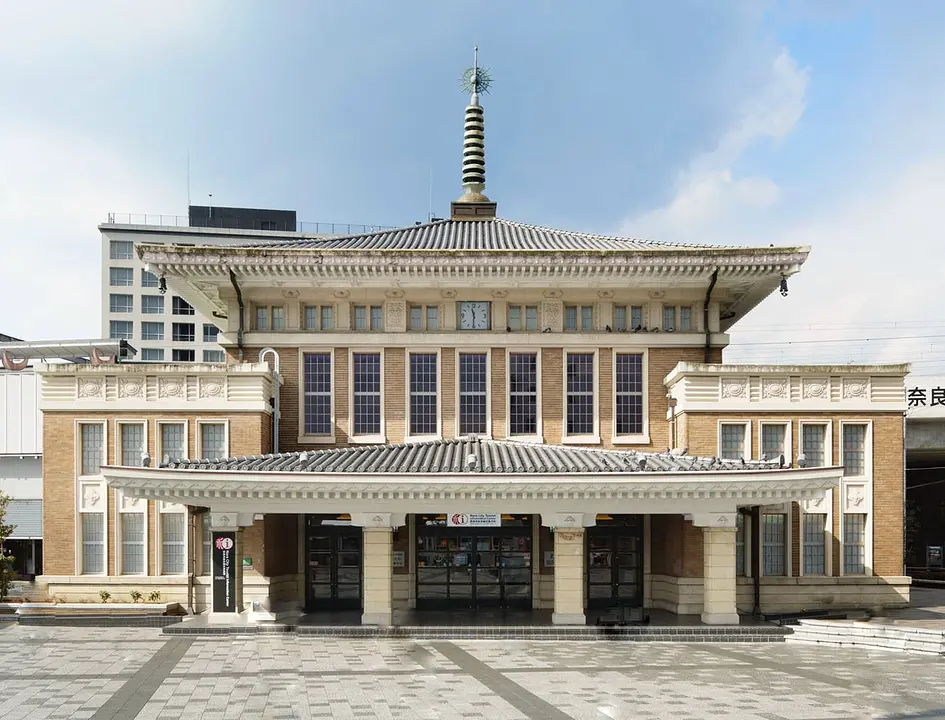
Nara City Tourist Information Center
The former station building of JR Nara Station opened on July 25, 2009 as the Nara City General Tourist Information Center. There is also tourist information in foreign languages and a tourist information search corner connected to the internet.
Heijokyu Izanai-kan (Guidance Center)
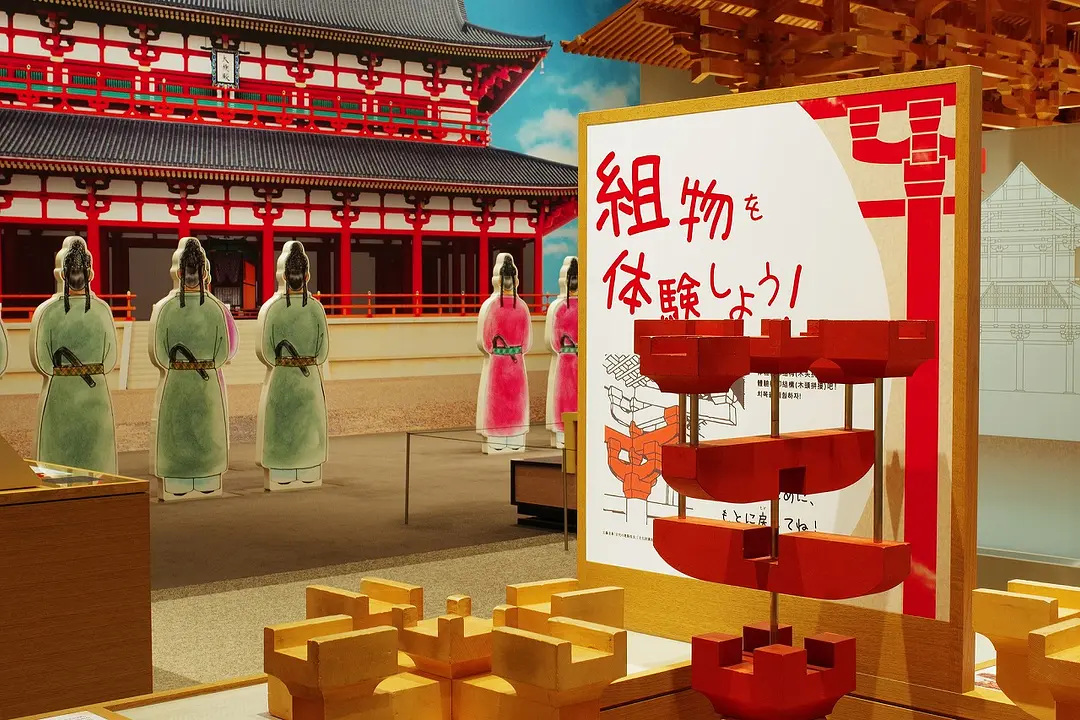
Heijokyu Izanai-kan (Guidance Center)
One of the five buildings in Suzakumon Square, this is a guidance facility where you can experience Heijo Palace from the Nara period and learn about the history and overview of the Heijo Palace ruins as a whole. Learn about the elegant world and people's lives of the Nara period in an easy-to-understand space that makes you feel like you have entered the Heijo Palace of yesteryear, including a restored model (1/200 scale) of the entire Heijo Palace, large-scale videos, and a picture scroll of Heijo Palace. can do. The display of excavated items and materials excavated within the Heijo Palace ruins, as well as the structural model (1/5) created for the first restoration of Daigokuden, are also worth seeing.
Suzaku-mon Hiroba Square
Suzaku-mon Hiroba Square
Suzakumon Square is a complex facility completed in 2018 in front of the Suzakumon gate of the Heijo Palace ruins.It is a vast park that combines five buildings lined up on both sides of Suzakuoji Street and outdoor spaces such as a lawn plaza. is. The square, where festivals were held 1,300 years ago during the Nara period, has been revived in modern times as a base for enjoying the Heijo Palace Ruins Historical Park. ``Heijo Palace Izanaikan'', a guidance facility where you can see a model of Heijo Palace from the Nara period, ``Tenpyo Mitsukikan'', which has a tourist information center and Nara specialty products, ``Tenpyo Umashikan'', which has a restaurant and cafe, There is Tenpyo Tsudoikan, a gathering space for groups of people on school trips, and Tenpyo Miharashikan, which has an observation deck and a VR theater. In addition, the ``Restored ship of envoy to Tang Dynasty'' is installed outside as a symbol of Suzakumon Square.
Suzaku-mon (South Central Gate)
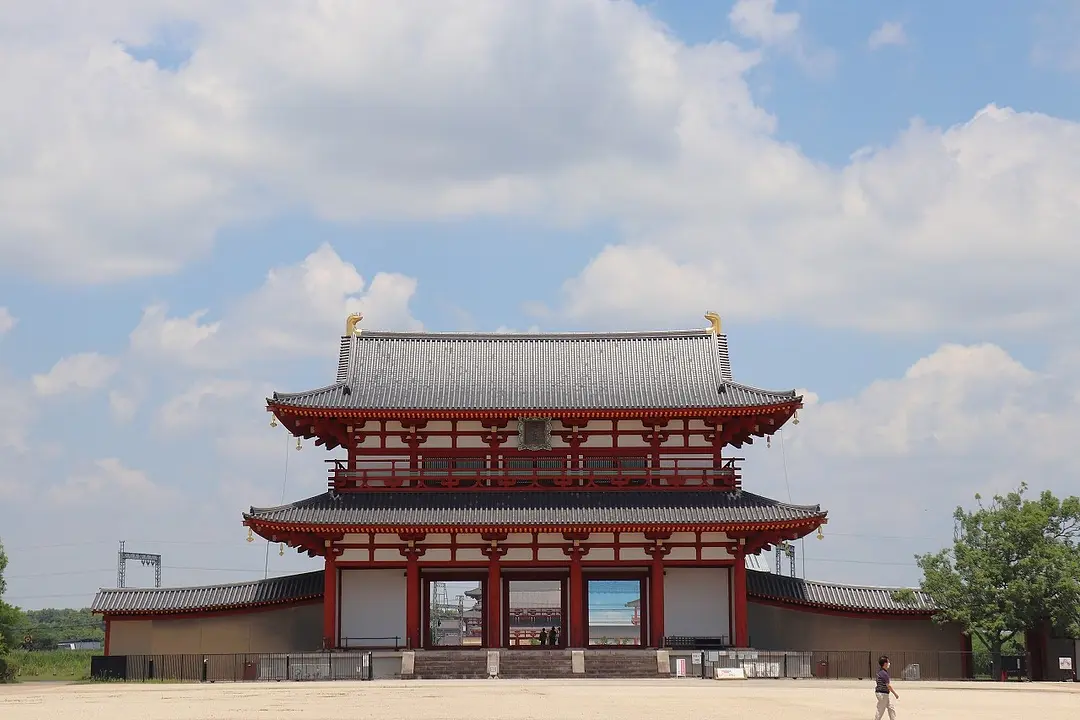
Suzaku-mon (South Central Gate)
Suzakumon, the main gate of Heijo Palace. From here to Rashomon Gate, the entrance to Heijo Palace, Suzaku-oji Road, approximately 75m wide, continued straight. On either side of the Suzakumon Gate were 6m-high Tsukiji walls (fences made of tamped earth) surrounding Heijo Palace, which was approximately 1km square in area. Ceremonies were once held in front of the gate on New Year's Day and when diplomatic missions were being picked up and dropped off, as well as Utagaki, where men and women from the capital sang love songs to each other. The current Suzakumon gate was restored in 1998 and is a double-sided gated structure with a width of about 25m and a height of about 20m.
Heijokyu-seki Shiryo-kan (Nara Palace Site Museum)
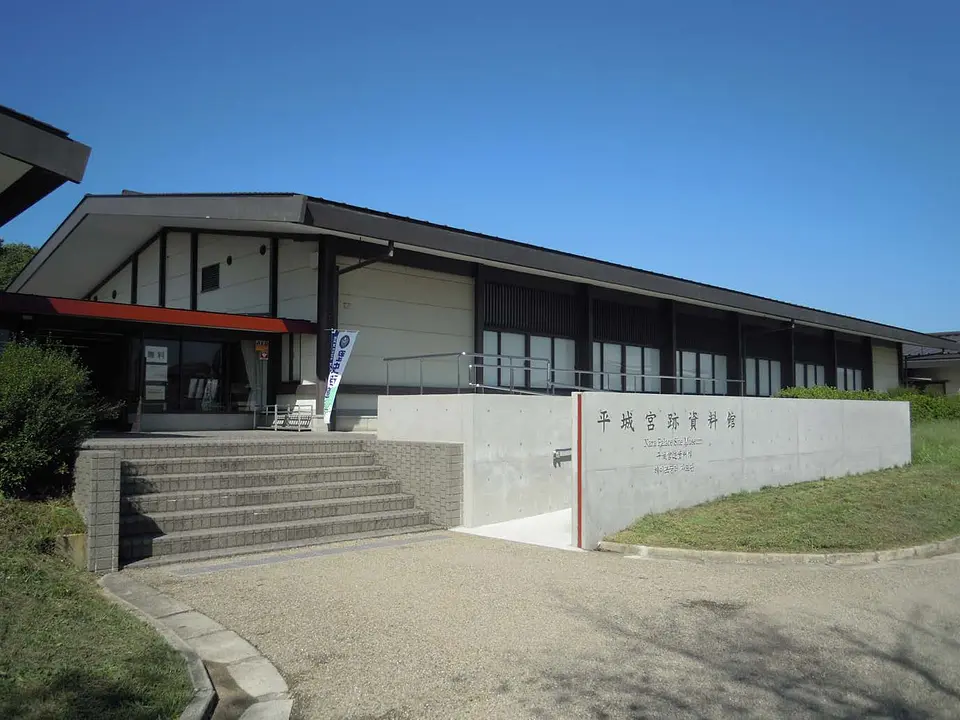
Heijokyu-seki Shiryo-kan (Nara Palace Site Museum)
This museum exhibits the results of the excavations of the ruins of Heijo Palace, which the Nara National Research Institute for Cultural Properties has continued from 1959 to the present day. In addition to artifacts excavated from the Heijo Palace ruins, the permanent exhibition also includes dioramas that recreate the government offices and palace interiors of the time, allowing you to learn about the lives of people during the Nara period. In addition to archeology and the Nara period, the latest research results from the Nara Research Institute for Cultural Properties will also be on display. (Photo provided by Nara Research Institute for Cultural Properties)
Daiichiji Daigokuden(Former Imperial Audience Hall)
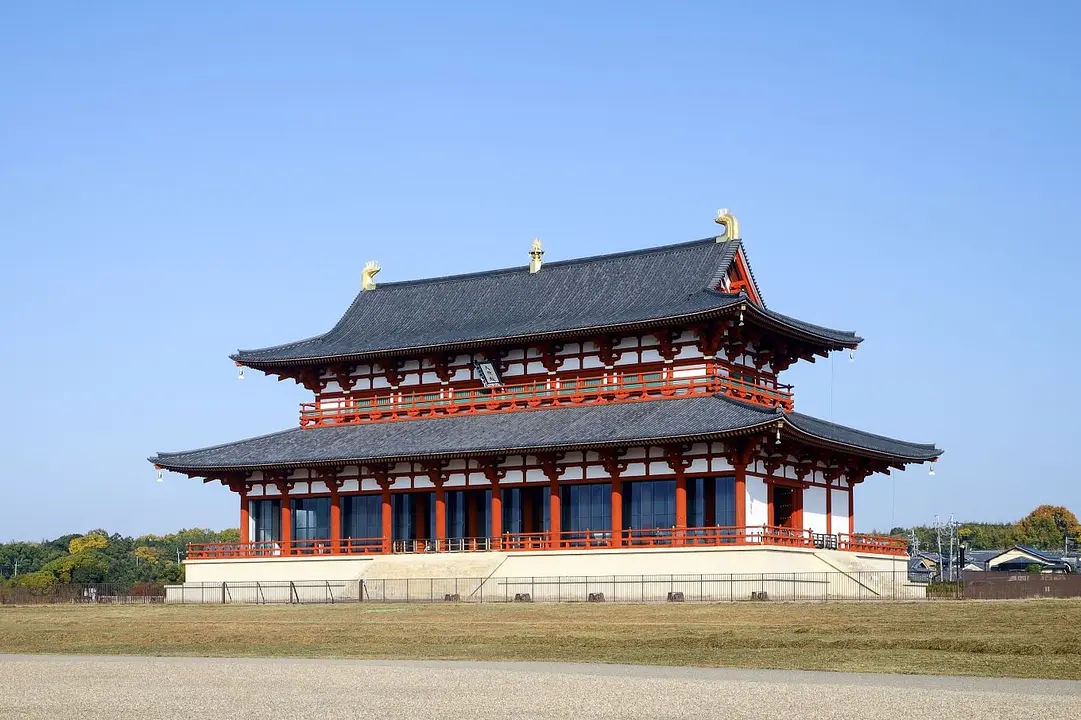
Daiichiji Daigokuden(Former Imperial Audience Hall)
Daigokuden was Heijo Palace's largest palace and was used for the country's most important ceremonies, such as the Emperor's coronation and meetings with foreign envoys. The current building, which was restored in 2010, is approximately 44m in front, 20m in side, and 27m in height from the ground. You can also take a look inside, including the Emperor's throne, Takamikura, and the painted small walls. The vast area, which includes theC, is approximately 320 meters north to south and approximately 180 meters east to west, and is being systematically developed as the First Daigokuden, which was the central facility of Heijo Palace. The Tsukiji Corridor, Daigokumon (South Gate), and East and West Towers that surround Daigokuden will also be restored over a long period of time while the construction sites are open to the public, and will be gradually opened to the public. *Restoration of Daigokumon (South Gate) will be completed in March 2022 (Reiwa 4)
Formar Imperial Audience Hall
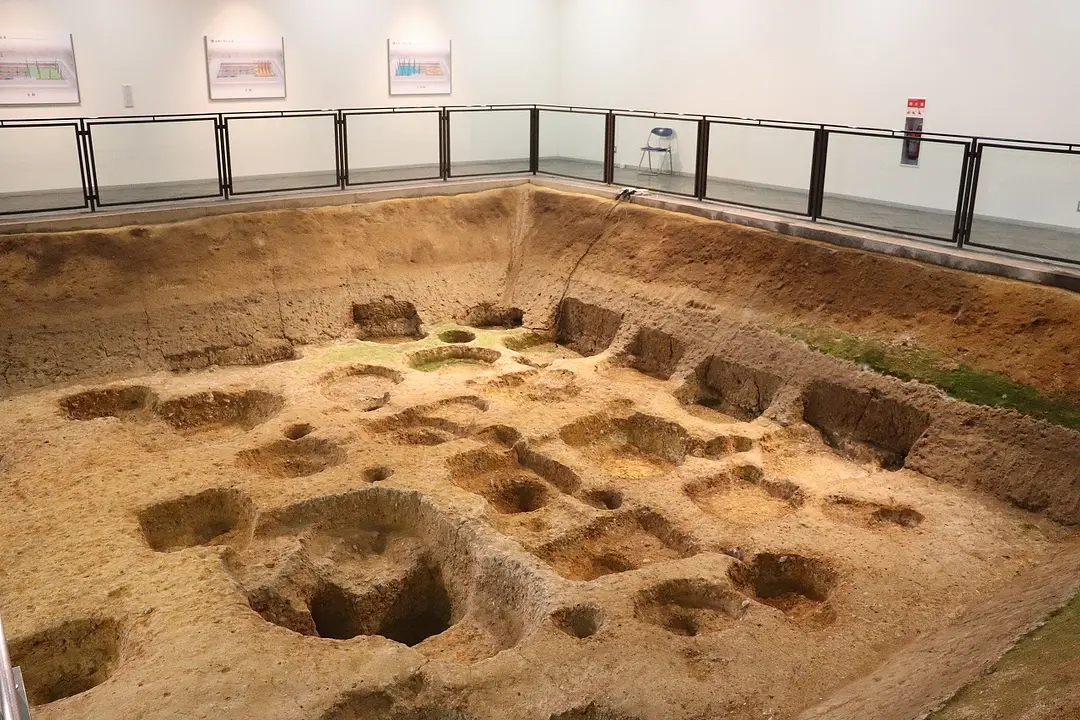
Formar Imperial Audience Hall
The remains found during excavations are preserved and exhibited in a protection facility called Oiya. Also worth seeing are excavated artifacts such as well frames and wooden gutters, as well as building models such as the Imperial Palace (Emperor's residence), which have been restored based on research. Like the First Daigokuden, Suzakumon Gate, and Toin Garden, it is a facility established and owned by the Agency for Cultural Affairs.
Toin Teien (East Palace Garden)
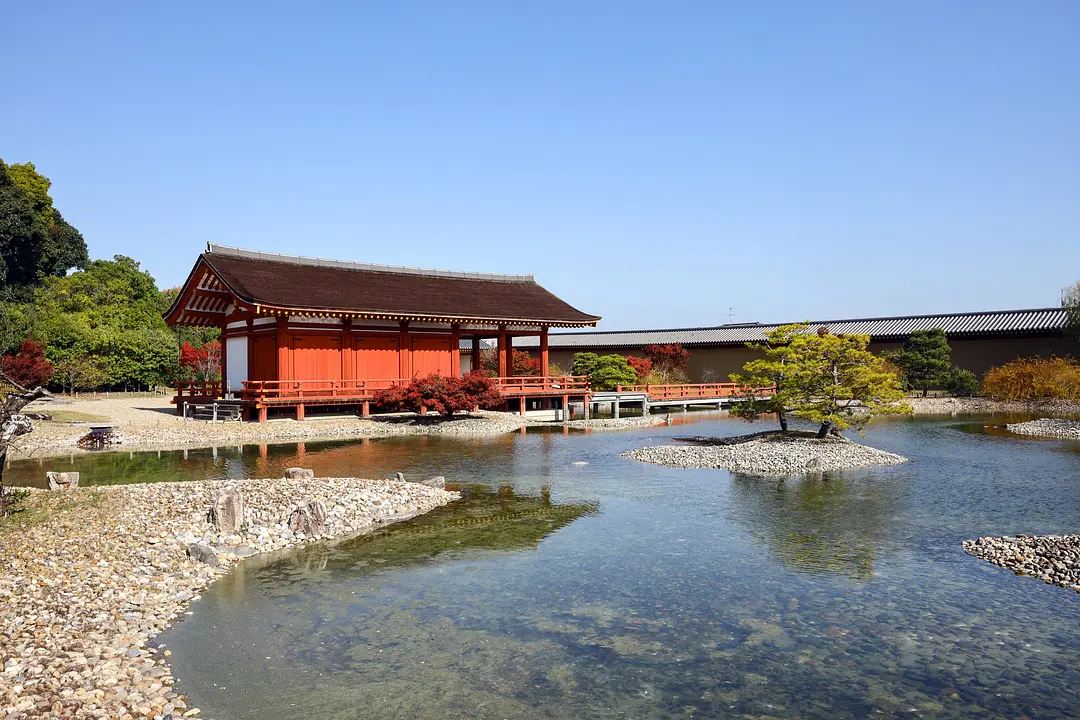
Toin Teien (East Palace Garden)
An elegant garden located on the eastern overhang of the Heijo Palace ruins, which was known as ``Togu'' or ``Toin''. Centered around an L-shaped pond, it is thought to have served as a guesthouse for members of the imperial family to hold banquets and ceremonies. The remains of the garden were discovered in 1967 (Showa 42) and restored in 1998 (Heisei 10) based on the results of many years of research. In 2010, it was designated as a special scenic spot as a particularly valuable ancient garden.
